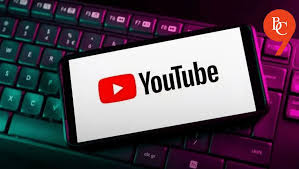
Breaking News
 Maxwell's Epstein Offer, Mamdani Effect Is REAL & Trump's Shooting Was An INSIDE JOB?...
Maxwell's Epstein Offer, Mamdani Effect Is REAL & Trump's Shooting Was An INSIDE JOB?...
 Office Paranoia: Layoffs, AI, And Job Insecurity Are Terrorizing Workers
Office Paranoia: Layoffs, AI, And Job Insecurity Are Terrorizing Workers
 The Streetwing: a flying car for true adventure seekers
The Streetwing: a flying car for true adventure seekers
Top Tech News
Magic mushrooms may hold the secret to longevity: Psilocybin extends lifespan by 57%...
 Unitree G1 vs Boston Dynamics Atlas vs Optimus Gen 2 Robot– Who Wins?
Unitree G1 vs Boston Dynamics Atlas vs Optimus Gen 2 Robot– Who Wins?
 LFP Battery Fire Safety: What You NEED to Know
LFP Battery Fire Safety: What You NEED to Know
 Final Summer Solar Panel Test: Bifacial Optimization. Save Money w/ These Results!
Final Summer Solar Panel Test: Bifacial Optimization. Save Money w/ These Results!
 MEDICAL MIRACLE IN JAPAN: Paralyzed Man Stands Again After Revolutionary Stem Cell Treatment!
MEDICAL MIRACLE IN JAPAN: Paralyzed Man Stands Again After Revolutionary Stem Cell Treatment!
 Insulator Becomes Conducting Semiconductor And Could Make Superelastic Silicone Solar Panels
Insulator Becomes Conducting Semiconductor And Could Make Superelastic Silicone Solar Panels
 Slate Truck's Under $20,000 Price Tag Just Became A Political Casualty
Slate Truck's Under $20,000 Price Tag Just Became A Political Casualty
 Wisdom Teeth Contain Unique Stem Cell That Can Form Cartilage, Neurons, and Heart Tissue
Wisdom Teeth Contain Unique Stem Cell That Can Form Cartilage, Neurons, and Heart Tissue
 Hay fever breakthrough: 'Molecular shield' blocks allergy trigger at the site
Hay fever breakthrough: 'Molecular shield' blocks allergy trigger at the site
YouTube Will Not Monetize Content Featuring AI-Generated Videos from July 15, 2025

The rise of generative AI tools has made it easier than ever to create convincing videos with minimal human input. While this technology has enabled creativity and accessibility, it has also led to a flood of low-quality, misleading, or entirely fabricated content. Advertisers and viewers alike have raised concerns about the potential for misinformation, copyright violations, and brand safety risks.
According to YouTube's updated guidelines, AI-generated videos are defined as content where the primary visuals or audio are created by artificial intelligence, with little to no human involvement. This includes:
• Fully AI-animated or deepfake videos
• AI-generated voiceovers or music tracks
• Synthetic news reports, interviews, or fictional characters
• Videos that use AI tools to mimic real people or events

 No one saw this coming…
No one saw this coming…
 AI Getting Better at Medical Diagnosis
AI Getting Better at Medical Diagnosis

